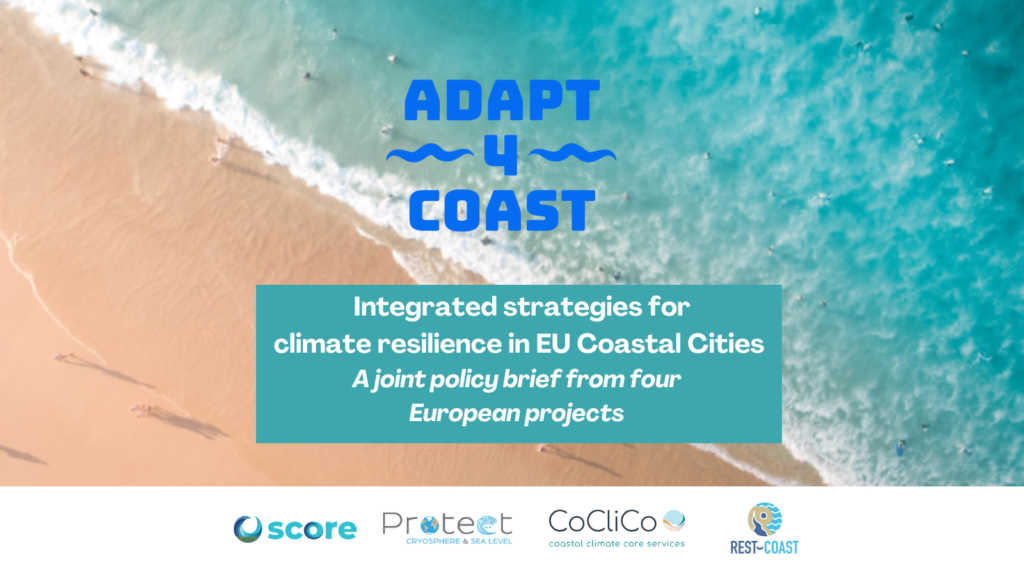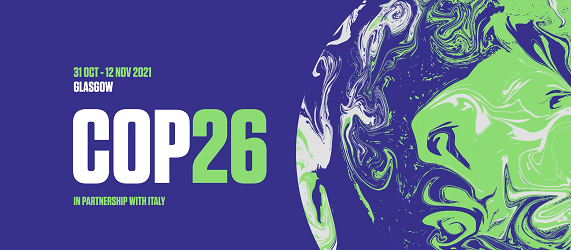Find here the policy-briefs produced by PROTECT or in collaboration with other projects.
PROTECT policy-briefs
January 2025
Adapting to the changing cryosphere and sea-level rise: recommendations
The policy brief “Adapting to the changing cryosphere and sea-level rise: recommendations“, supported by CoCliCo and OCEAN:ICE, summarizes the outcomes of the PROTECT full track.
The key messages and recommendations are derived from these 10 factsheets:
- Glaciers will keep losing mass, but we decide how fast and how much
- Every glacierized region evolves differently under climate change, and so do the impacts
- Ice shelf ocean melting and iceberg calving control the accelerated mass loss of the Antarctic Ice Sheet
- Future sea level: the enduring legacy of Antarctic ice loss
- The Greenland Ice Sheet is losing its protective firn buffer, accelerating mass loss.
- Regional sea level change is different from the global average
- Sea level is committed to rise until 2300 and beyond, but we can influence how much and how fast
- Navigating uncertainty: adapting to sea-level rise with flexible strategies
- Impacts and adaptation strategies for sea-level rise by 2150
- Shaping tomorrow’s coastlines: the long-term impact of sea-level rise
Key messages
The cryosphere plays a critical role in the Earth’s climate system. Glaciers, ice sheets, and sea levels are at the forefront of climate change impacts. Findings from PROTECT underscore the urgency of mitigating greenhouse gas emissions and adopting adaptation strategies to address inevitable impacts.
- Mitigation is critical: Reducing emissions directly limits mountain glacier and ice sheets mass loss, preserving critical water resources and limiting further acceleration of sea-level rise, thus giving more time for coastal adaptation.
- Adaptation is urgent: With inevitable impacts on water availability and coastal regions, adaptation is of greatest importance.
- Regional variability matters: Climate impacts on glaciers and sea levels vary substantially across regions, requiring tailored responses.
- Uncertainties are not barriers to action: Decision science offers pathways to act amid the uncertainties, leveraging adaptation frameworks and pathways.
Policy recommendations
- Accelerate emission reductions to follow the lower emission scenario to limit cryosphere loss and associated sea-level rise
- Enhance monitoring of glaciers and ice sheets to refine models and predictions
- Support the long-term development of ice sheet models, their integration into climate models, and the coupling of glacier models with hydrological models, while promoting education and training to build expertise in these areas
- Invest in flexible and localized coastal management that incorporates uncertainty and long-term projections
- Foster international collaboration to share knowledge, resources, and strategies for mitigating and adapting to global impacts
Chapuis, A., Durand, G., Ballestros-Martinez, C., Champollion, N., Edwards, T., Hinkel, J., Heslop, F., Huss, M., Jourdain, N., Klose, A. K., Lincke, D., Malagón-Santos, V., Marzeion, B., Mottram, R., Nicholls, R., Pattyn, F., Slangen, A., Thiéblemont, R., van den Broeke, M. R., … Zekollari, H. (2025). Adapting to the changing cryosphere and sea-level rise: recommendations. Zenodo. https://doi.org/10.5281/zenodo.14650681
November 2022
When will a 2-metre rise in sea level occur, and how might we adapt?
PROTECT , CoCliCo and SCORE have co-written a policy-brief about 2-m rise in sea level. Read here the key messages and find below the full policy-brief.
, CoCliCo and SCORE have co-written a policy-brief about 2-m rise in sea level. Read here the key messages and find below the full policy-brief.
A 2-metre rise in sea level is almost inevitable. The uncertainty is on the timing, somewhere between one century and the next two thousand years depending on polar ice sheet melting and which socio-economic pathway we follow. Exceeding 2 meters of sea-level rise will fundamentally change European coastal zones.
Europe and National States can recognize that coastal adaptation is an ongoing process that involves short-term actions, long-term planning and strategic thinking.
Three actions are urgently needed to limit losses, damages and lock-ins:
- Massive and immediate reductions of greenhouse gas emissions in order to slow down sea-level rise, limit the amplitude of sea-level rise in the long term, thus giving more time and options for coastal adaptation.
- Engagement into adaptation for multiple metres of sea-level rise, including preparing the ground for adaptation, identifying challenges and options, monitoring trends and implementing options with high cobenefits.
- Support to science and climate service development to reduce uncertainties in future sea-level rise, assess risks and associated adaptation options and provide useable information and climate services to coastal adaptation stakeholders.
Le Cozannet, G., Durand, G., Nicholls, R., Slangen, A., Lincke, D., & Chapuis, A. (2022). When will a 2-metre rise in sea level occur, and how might we adapt?. Zenodo. https://doi.org/10.5281/zenodo.14650300
Access and download the policy-brief
Download a printable version in French
Contribution of PROTECT to other Policy-briefs
12 December 2023
Integrated strategies for climate resilience in EU coastal cities – A joint policy brief from European projects

16 October 2023 – 2-4 pm CEST
Tipping Points in Antarctica: Towards Evidence-Based Policy┃Brussels 2023
The event is co-organized by EU-funded projects TiPACCs, OCEAN:ICE, SO-CHIC, PROTECT,and the EU Polar Cluster, EU-PolarNet 2 and European Polar Board.
3 May 2023
Recent changes in the Antarctic and their impacts on Europe

More information here
This event is organised by the EPB with Horizon2020-funded EU Polar Cluster projects SO-CHIC, EU-PolarNet 2 with TIPACCS, and PROTECT. The event takes place in the context of increasing pressure on the processes regulating ocean circulation, increased melting of Antarctic sea ice and ice shelves, and increasing scientific awareness of the importance of the region to Europe. Our goal is to present relevant insights to European policy makers on the importance of the Southern Ocean and the Antarctic to Europe, for example, via potential input to sea level rise. We aim to highlight the accompanying implications for European policy and Antarctic research.
November 2021
Polar warming, global warning – COP26 EU Pavilion side event

This session was organised by Cluster Members EU-PolarNet 2, SO-CHIC, PROTECT, TiPACCs and the EPB, and representatives from the Alfred Wegener Institute, British Antarctic Survey, the Université libre de Bruxelles, and the University of Grenoble.
Presentations
| Topic | Presenter | Institute |
|---|---|---|
| How does the European research policy support polar research and international assessments such as the IPCC? | Larisa Lorinczi | European Commission |
| Sea level rise: what is at stake beyond 2°C? | Prof. Frank Pattyn – PROTECT | Université libre de Bruxelles |
| How much can we limit losses from the ice sheets this century? | Dr. Tamsin Edwards – PROTECT | King’s College London |
| Antarctic biodiversity under pressure: a race against time | Asso. Prof. Bruno Danis | Université libre de Bruxelles |
| Tipping points and sea-level rise | Prof. Ricarda Winkleman – PROTECT | Potsdam Institute for Climate Impact Research |
| Polar science highlights policy needs | Prof. Dame Jane Francis | Director of the British Antarctic Survey |
The recording of the event is available to rewatch here: https://youtu.be/5JKaoyiISHM
